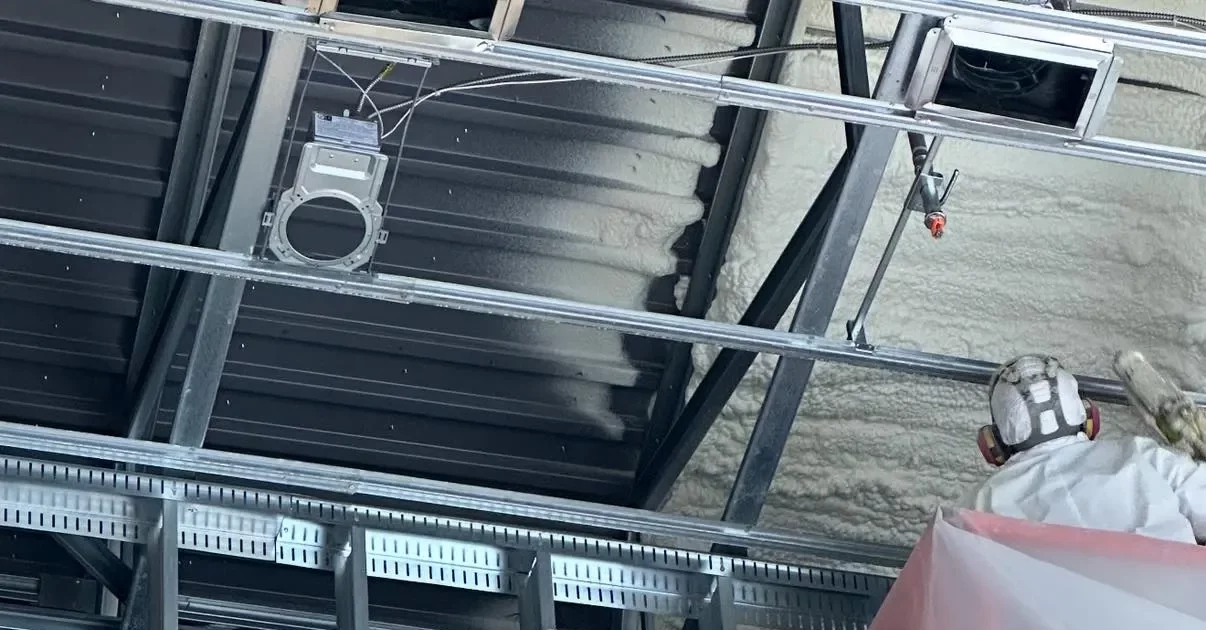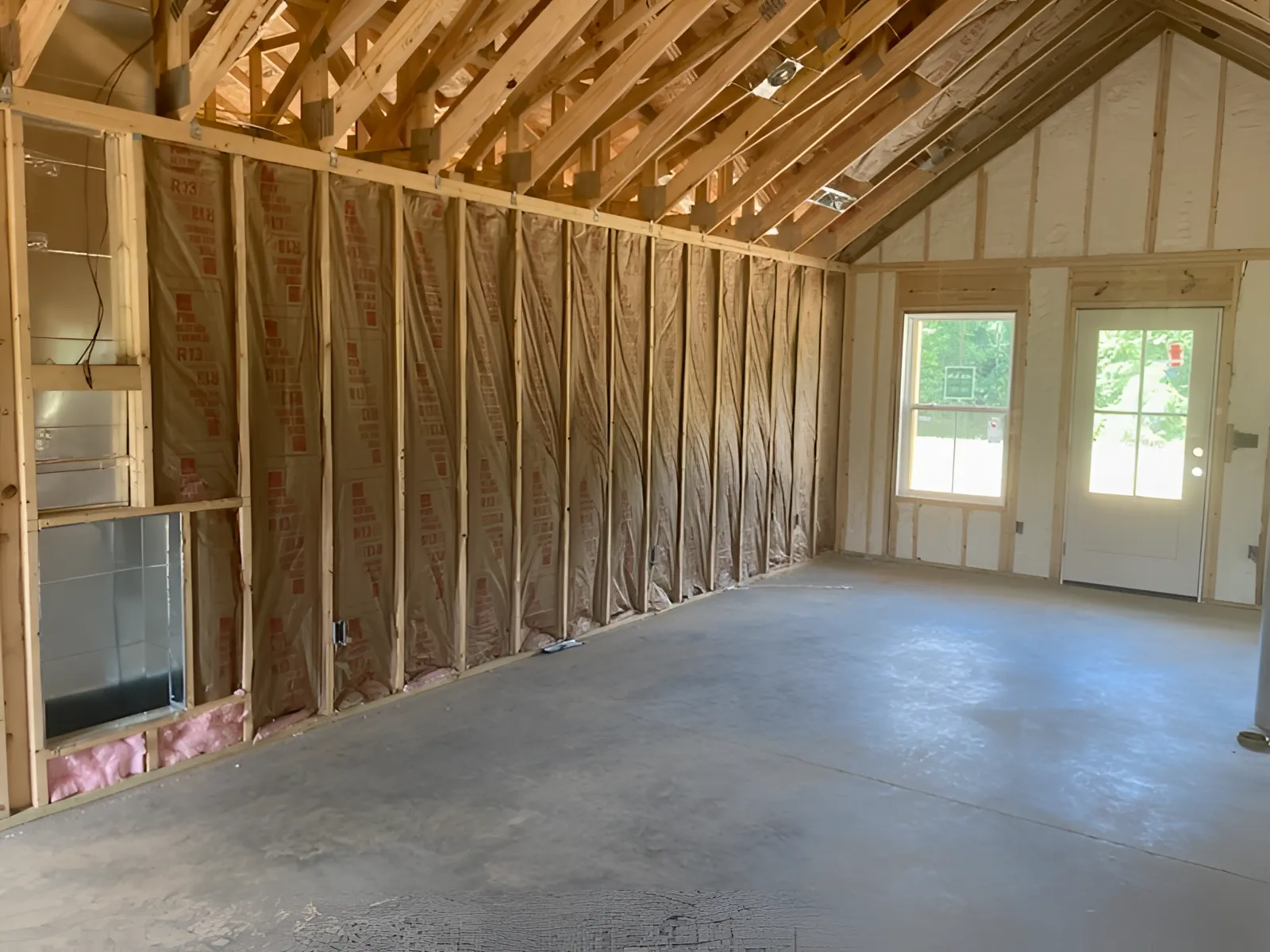
Spray foam insulation offers effective air sealing and thermal resistance for homes in Clarksville, especially in humid, variable climates. Homes with inconsistent indoor temperatures, high energy bills, or visible insulation gaps can benefit directly from spray foam. Closed-cell options deliver higher R-values per inch, making them suitable for crawl spaces, attics, and walls where traditional insulation underperforms.
In Clarksville, where seasonal humidity can trigger mold growth and indoor air quality issues, spray foam helps block moisture infiltration more reliably than fiberglass or cellulose. This guide explains when it makes sense to choose spray foam, how it compares to other materials, and which building conditions justify its use.
Armored Insulation applies years of regional field experience and verified installation data to guide insulation choices for homes across Tennessee and southern Kentucky.
Clarksville experiences humid summers and cold winters. These conditions contribute to:
Spray foam helps prevent these issues by expanding into all crevices, eliminating uncontrolled airflow and condensation points.
Homes with:
gain structural and thermal improvement from spray foam, especially where batt or blown-in options leave thermal bridges.
Bonus Tip: In retrofit projects, spray foam often reduces the need for extensive demolition because it conforms to existing framing without requiring a full cavity fill.
| Insulation Type | Air Seal Capability | R-Value per Inch | Moisture Resistance | Best Use Areas |
|---|---|---|---|---|
| Spray Foam (Closed) | Excellent | 6.0 – 7.0 | High | Crawl spaces, walls, attics |
| Spray Foam (Open) | Good | 3.5 – 4.0 | Moderate | Interior walls, soundproofing |
| Blown-In Cellulose | Poor | 3.2 – 3.8 | Low | Attics, wall retrofits |
| Fiberglass Batt | Poor | 2.9 – 3.8 | Low | New framing, accessible joists |
| Mineral Wool | Moderate | 3.7 – 4.3 | High (non-absorbent) | Fire-rated walls, basements |
Source: U.S. Department of Energy (DOE), Insulation Fact Sheet 2025.
| Property | Closed-Cell Spray Foam | Open-Cell Spray Foam |
|---|---|---|
| R-Value (per inch) | 6.5 – 7.0 | 3.5 – 4.0 |
| Expansion Ratio | 30:1 | 100:1 |
| Vapor Barrier Capability | Yes | No |
| Structural Rigidity | Adds strength | Flexible |
| Application Temperature | >40°F ambient | >40°F ambient |
Bonus Tip: For unvented attics in Clarksville homes, closed-cell spray foam can double as a thermal and vapor barrier when applied at the roof deck.

Older homes may require air leak testing before application. Some structures have outdated wiring or moisture issues that must be addressed first.
Always measure relative humidity in crawl spaces and attics. If readings exceed 60%, install ventilation or dehumidification before applying foam.
If existing insulation is degraded, removal is often necessary to ensure proper foam adhesion. Inconsistent layering reduces performance.
Check for code updates on vapor barriers, ignition barriers, and foam use in occupied spaces. Tennessee jurisdictions may require fire-resistant coatings.
Armored Insulation provides targeted solutions for homes that need performance improvements or material upgrades. Service offerings include:
Spray foam is highly effective in Clarksville homes that need airtight insulation and moisture control. Buildings with unsealed crawl spaces, aging wall systems, or inconsistent indoor temperatures benefit most. Proper assessment of structure, ventilation, and material condition ensures optimal performance and durability.
For accurate guidance on spray foam insulation for Clarksville properties, contact Armored Insulation. Experienced crews provide region-specific applications for residential structures.
Email: [email protected]
Phone: (270) 331-4844
Closed-cell spray foam lasts over 30 years when properly installed. It resists degradation, pests, and moisture.
Yes. In hybrid systems, spray foam is often used for air sealing while batt or blown-in insulation provides volume R-value.
When installed correctly and allowed to cure, spray foam emits no harmful gasses. Always use certified installers.
Closed-cell types resist water absorption. However, the source of moisture should be corrected immediately to avoid hidden structural damage.
Small damages can be patched with low-pressure kits, but larger failures may need reapplication. Inspection helps determine the extent.
Closed-cell foam remains dimensionally stable. Open-cell may settle slightly in wall cavities but not enough to affect performance.
Yes, in most residential applications, an ignition barrier like intumescent coating is required over exposed foam.
Spray foam deters most rodents and insects but does not eliminate infestations. Seal entry points separately.
Check indoor humidity and surface temperatures annually. Use thermal cameras to detect voids if performance drops.